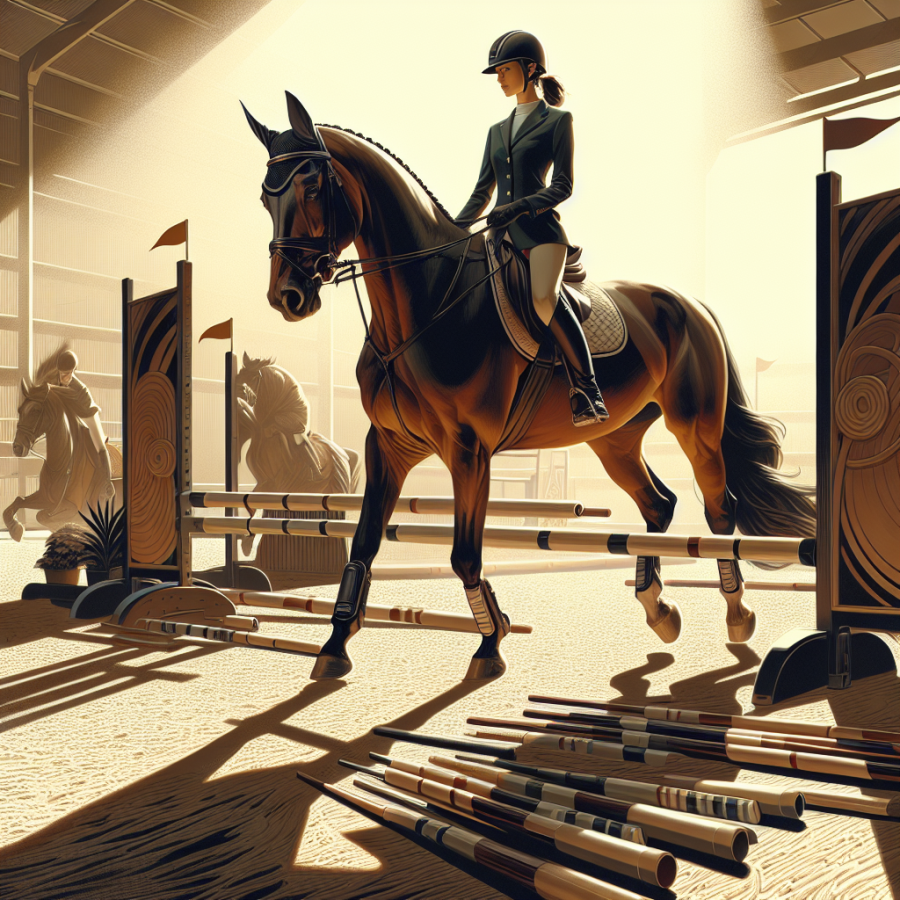Understanding the Different Types of Equestrian Sports
Equestrian sports are a treasure trove of athletic competition that encompasses a wide range of disciplines, styles, and types. Weather you're an avid fan, a beginner rider or someone who simply appreciates the majestic beauty of horses, there is a sizeable selection of equestrian sports to pique your interest. In this part of our comprehensive guide, we'll help you understand the different types of equestrian sports in order to give you a fuller picture of this thrilling world.
The first type to cover is Dressage. This sport, sometimes likened to ballet for horses, focuses on precision, smoothness, and harmony. The rider guides the horse through a series of complex movements and the judges decide who performed them best. Dressage showcases both the horse's trainability and natural talents, and the rider's mastery and connection with their mount.
Next comes Show Jumping—a potentially breath-taking spectacle. In this event, riders navigate their horses around a course, jumping over obstacles of varying heights and spreads. It's a true test of skill, accuracy, speed, and the horse’s courage. Competitions can range anywhere from local clubs to international championships such as the Olympics.
Eventing is a versatile and demanding discipline, often referred to as the triathlon of the equestrian world. It combines dressage, show jumping, and cross-country into one formidable test of horse and rider. It’s a sport that showcases the agility, versatility, and stamina of the equine athlete and tests the rider's skill, courage and adaptability.
Endurance Riding is another beloved equestrian sport. It’s designed to test not just the speed but the endurance of a horse over vast distances, as the name implies. This sport can involve races stretching across 50 to even 100 miles, with conditions varying based on the specific ride. It pushes both the horse and rider to their limits, instilling a strong bond between the pair as they tackle the trail together.
In Polo, considered one of the fastest and most exciting equestrian sports, riders are not only competing against each other but also working in teams. They ride at high speeds while trying to direct a small ball into the opposing team's goal, all while on horseback. This adrenaline-pumping game requires skill, fast reflexes, and exemplary teamwork.
Vaulting is perhaps one of the most unique of the different types of equestrian sports.
Read also:
The Annual Earnings of Soccer Players: A Comprehensive Analysis
Training tips and techniques for Aspiring Equestrian Athletes
Equestrian training is inherently sport-specific. It’s not about being the best overall athlete, but rather the best equestrian athlete – a combination of resilience, strength, precision, and deep understanding of horse behavior. Closer to performance art than a traditional sport, the best riders master a blend of athletic ability, artistry, and intricate communication with their horses.
To shine in the thrilling world of equestrian sports, an aspiring equestrian athlete needs to consider the following training tips and techniques:
1. Strength and Cardiovascular Training: Both riders and horses must be in excellent physical condition. Cardiovascular exercises, such as running or swimming, increase stamina and reduce fatigue. Similarly, strength training for the core, back, legs, and arms ensures adequate control over the horse and maintains rider balance.
2. Riding Lessons: Whether you're a beginner learning the ropes or an experienced rider seeking advancement, professional riding lessons are key. They offer training in all fundamentals of horse riding, which includes dressage, show jumping, and cross-country riding.
3. Regular Practice: The mantra of 'practice makes perfect' is applicable in equestrian sports as with any other. Regular riding helps improve both technique and confidence. Having a set riding schedule, be it daily or weekly, is beneficial for maintaining consistency.
4. Mental Preparation: The mental aspect of equestrian sports is often overlooked, yet it is crucial to success. Mindset training techniques, such as visualization and mindfulness, can significantly improve performance by increasing focus, reducing nerves, and improving the rider’s relationship with their horse.
5. Understand Horse Behavior: Horses are sensitive creatures that respond to their rider’s cues. It's crucial for riders to understand horse psychology to communicate effectively with these animals. This involves learning about their behavior, gestures, and responses to certain actions or environments.
6. Proper Nutrition: An athlete's diet plays a significant role in their performance. Aspiring equestrian athletes should maintain a balanced diet to keep their energy levels up and ensure their body can recover after intense training sessions.
7. Regular Equipment Checks: Regularly inspecting and maintaining riding equipment ensures safety, prevents accidents and enhances performance. Everything from the saddle to the bridles and stirrups should be thoroughly checked before every ride.
8. Participate in Competitions: One of the best ways to improve skills and gain experience is through participation in competitions.




